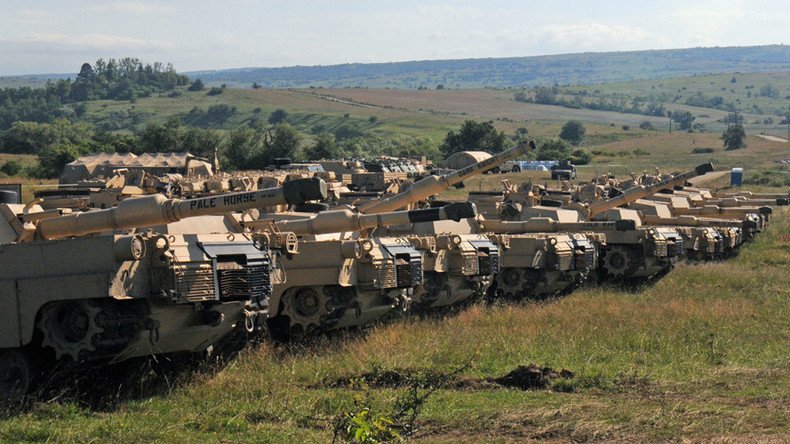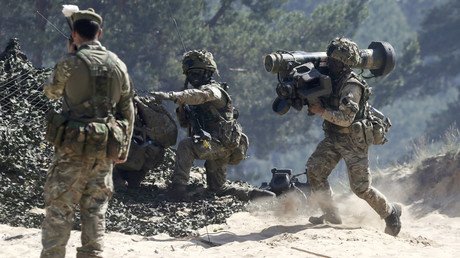25,000 troops to take part in largest US-led Black Sea drills in July

The largest US-led drills in the Black Sea area this year will see 25,000 American and allied troops gather in Bulgaria, Hungary and Romania this July for the annual ‘Saber Guardian 2017’ exercises.
The fifth edition of the annual Saber Guardian war-games, scheduled for July 10-20, will be “larger in both scale and scope” compared to previous years, the US European Command said in a statement.
It will amass around 25,000 servicemen from the US and 23 other nations, making it “the largest of the 18 Black Sea region exercises this year.”
#PressRelease: Exercise #SaberGuardian 2017 to take place in July in 🇧🇬, 🇭🇺, + 🇷🇴. Read more at https://t.co/2jezaPKsYI#StrongEuropepic.twitter.com/Uw2beMNZmU
— US Army Europe7️⃣5️⃣ (@USArmyEurope) June 7, 2017
According to the US European Command, the drills will focus on “participant deterrence capabilities, specifically, the ability to mass forces at any given time anywhere in Europe.”
The participating forces will also engage in an array of live fire exercises, river crossings and a mass casualty exercise.
The European-based 3rd Armored Brigade Combat Team, 4th Infantry Division and 2nd Cavalry Regiment are to represent the US military during the drills.
The Saber Guardian drills will be preceded and followed by a number of smaller exercises, in what the Americans calls “deterrence in action.”
Also on Wednesday, the US European Command announced the arrival of “several” B-1B heavy bombers from Ellsworth Air Force Base in South Dakota to the Fairford Airbase in the UK.
The bombers will support the separate Saber Strike and BALTOPS exercises to take place in the Baltics, and elsewhere in Europe this June.
Saber Strike is an annual exercise which was first staged in 2010 to improve cooperation among allies, while promoting regional stability and security, the US European Command said.
The current chapter of the so-called BALTOPS multinational drills will involve 4,000 navy personnel, 50 ships and submarines and more than 50 aircraft.
On Tuesday, Russia scrambled jets to intercept a nuclear-capable US B-52 strategic bomber which was flying in neutral airspace over the Baltic Sea along the Russian border.
READ MORE: Russian Su-27 intercepts US B-52 bomber over Baltic – Moscow
NATO used the Ukrainian conflict and Crimea’s reunion with Russia in 2014 as a pretext to boosting its military presence in Eastern Europe, which it says is necessary to reassure allies in the face of the “Russian threat.”
The US-led military alliance is regularly staging drills near Russia’s borders, involving troop numbers and hardware unseen since the Cold War.
Russia denies having any aggressive designs on Eastern Europe and believes that NATO is vilifying Moscow to justify increased defense spending among the nations in the military alliance.
Moscow sees NATO’s relentless military buildup in neighboring countries as a security threat, and has responded by strengthening its own forces in the western part of Russia.
On Tuesday, Russian Foreign Minister, Sergey Lavrov, blamed NATO of returning to “the policy of dividing lines In Europe” as he commented on the inclusion of Montenegro as the bloc’s 29th member.













